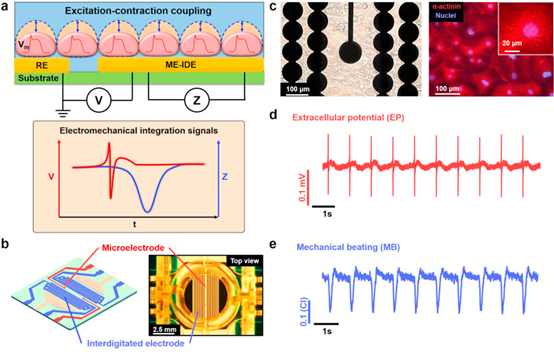Dr. Hu Ning in Prof. Wang Ping’s group, College of Biomedical Engineering and Instrument Science, Zhejiang University recently published a research paper in “Biosensors and Bioelectronics”(IF:8.173, TOP SCI) entitled Synchronized electromechanical integration recording of cardiomyocytes (https://doi.org/10.1016/j.bios.2018.06.017). This paper presents a new approach for synchronized electromechanical integration recording of cardiomyocytes.
Cardiac issues are always one of major health problems that attract wide attention by the public. It is urgent to explore a preclinical strategy to efficiently prevent the life-threatening arrhythmias by precisely assessing the cardiac excitation-contraction behavior. Conventional label-free asynchronous strategies are difficult to synchronously record and precisely match the excitation and contraction signals in vitro, while label-based strategies generally present pharmacological adverse effects and phototoxicity that significantly interfere the natural excitation and contraction signals. Both types of strategies preclude to exactly understand how cardiac excitation-contraction coupling changes in quantitative and coherent detail when dysfunctions occur. Here, we show a label-free synchronized electromechanical integration detection strategy that can synchronously monitor electrical and mechanical signals of cardiomyocytes over a long period of time by an integrated microelectrode-interdigitated electrode (ME-IDE). ME-IDE can detect subtle changes in electromechanical integration signals induced by drugs that target excitation-contraction coupling. Moreover, electromechanical integration delay is explored to specifically recognize the sodium channel inhibition. Furthermore, biomimetic electronic pacemaker function provides an alternative way to efficiently assess the drug-induced arrhythmia using refractory period of cardiomyocytes.
